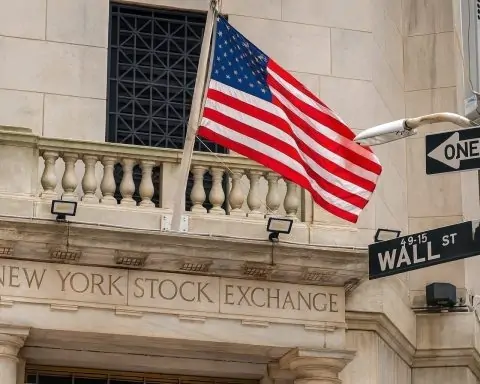Key Facts – October 18, 2025
- Crude craters: U.S. oil prices have sunk to their lowest level in nearly five years. Benchmark West Texas Intermediate (WTI) crude settled around $56.99 per barrel on Thursday – the weakest price since February 2021, and about 19% lower than a year ago [1]. Fears of a growing glut of crude and a global economic slowdown are driving the collapse [2].
- Gasoline at 2025 lows: For drivers, gas prices have fallen to their cheapest levels since January. The U.S. national average is hovering near $3.06–$3.07 per gallon this week [3], down roughly 15 cents from a year ago [4]. Analysts say a drop below $3 is imminent – “Americans appear to be on the cusp of seeing the national average drop below $3.00 per gallon and potentially stay there for the first time in years,” says Patrick De Haan, head of petroleum analysis at GasBuddy [5].
- Why prices are plunging: A perfect storm of surging oil supply and weakening demand is weighing on energy markets. OPEC+ producers have been gradually boosting output, and U.S. crude production has hit record highs (≈13.6 million barrels per day) [6]. The International Energy Agency now projects an “unprecedented” oversupply of about 4 million barrels a day by 2026 if current trends continue [7]. At the same time, demand growth has faltered amid a slowing economy and trade tensions – Goldman Sachs warns U.S.–China tariffs and soft economic data could cut global oil demand growth by up to 0.8 million barrels per day [8]. Seasonally, fuel demand also dips after the summer driving season, and U.S. refineries’ switch to cheaper winter gasoline blends is further easing pump prices [9].
- Expert forecasts: Major forecasters are slashing their oil price outlooks. The U.S. Energy Information Administration (EIA) now expects benchmark Brent crude to average only around $62 in Q4 2025 and $52 in 2026 [10]. Bank of America similarly predicts Brent at ~$61 by year-end but warns that a worsening trade war and extra OPEC+ supply “could drive Brent below $50” a barrel [11]. Even some industry leaders see a protracted period of low prices – Occidental Petroleum’s CEO said oil may stay “tight and range-bound” around $58–$62 through 2026 [12] – though others like ExxonMobil argue today’s glut will be temporary as underinvestment eventually bites into supply [13].
- Markets and impact: The oil-price plunge is translating into relief at the pump and mixed fortunes on Wall Street. With wages rising and fuel costs falling, Americans are now spending the smallest share of their paychecks on gasoline in many years [14] – under 2% of disposable income, according to the EIA, the lowest since 2005 [15]. Lower energy prices are helping cool inflation, though they also reflect economic headwinds. Energy stocks have been relatively resilient despite oil’s collapse: “Even as oil crumbles, North American oil stocks have held up,” notes TechStock², pointing to Occidental Petroleum’s shares being buoyed by a $9.7 billion Berkshire Hathaway investment and Canadian Natural Resources stock hitting three-year highs on strong earnings [16]. In Europe, however, weaker crude is pressuring Big Oil’s finances – analysts warn current shareholder payout plans are “unsustainable” if prices stay low [17]. BP has already scaled back buybacks to shore up its debt-heavy balance sheet, and TotalEnergies said it will slow share repurchases in response to cheaper oil [18].
Oil Nosedives on Glut Fears and Slowdown Worries
Crude oil prices have been in freefall this month, ending the week at levels not seen in nearly half a decade. The most actively traded WTI futures sank to about $57 per barrel, a price last witnessed when markets were recovering from the 2020 Covid crash [19]. This marks a stunning reversal from early 2022, when post-pandemic demand and geopolitical shocks drove oil above $100. Now, oversupply and recession fears have firmly taken the wheel.
Energy analysts point to a cascade of bearish factors. On the supply side, oil inventories are climbing as production outpaces consumption. The U.S. is pumping near all-time highs, and the OPEC+ alliance – led by Saudi Arabia and Russia – has been cautiously raising output targets each month [20]. “Global inventories are at multi-year highs,” the IEA noted, and it forecasts a large surplus through next year [21].
At the same time, demand signals are weakening. High interest rates and slowing economies in the U.S., Europe, and China are curbing fuel usage. The oil market took a decisive leg down in recent days after fresh U.S.–China trade tensions spooked traders. President Trump’s surprise threat in early October to impose 100% tariffs on additional Chinese goods ignited fears of a trade war that would “severely crush oil demand”, as traders put it [22]. “Rising trade tensions between the U.S. and China – with fears it could weigh on oil demand growth in the top two oil consumers – has weighed on oil prices,” observes Giovanni Staunovo, a commodities analyst at UBS [23]. In other words, the two largest oil-consuming nations rattling sabers over trade is a recipe for softer demand worldwide.
Geopolitics have also removed what was earlier a bullish factor for crude. Over the summer, worries about Middle East turmoil (from the Israel–Hamas war to Houthi rebel attacks in Yemen) had added a risk premium to prices. But recently, easing tensions in those conflict zones have calmed supply disruption fears [24]. For example, tentative ceasefire talks in Gaza and efforts to revive the Iran nuclear deal have reduced worst-case scenarios for oil exporters [25]. With that supportive factor fading, traders are left focusing on the fundamental imbalance of too much oil and not enough demand.
The result: oil prices have logged three straight weekly declines, and are down roughly 20% from their 2025 highs [26]. As Ed Morse, Citi’s veteran oil watcher, summed up in a note (per WSJ/Dow Jones reporting), “The market is in a classic cyclical downswing – inventories are building, and demand is disappointingly soft, so prices have to adjust downward.”
U.S. Drivers See Cheapest Gas of the Year
For American consumers, the oil slump has delivered an unexpected bonus at the gas pump. U.S. gasoline prices have tumbled for seven weeks in a row, according to AAA data, reaching their lowest levels of 2025. The national average for regular unleaded is now about $3.06 per gallon [27] – a level not seen since last winter. Many drivers are seeing “$2” prices pop up again on gas station marquees, especially across the South and Midwest. In fact, more than 40 states are experiencing falling gas prices, and at least 32 states have average prices below $3 already [28].
Just a month ago, gas was averaging around $3.20 nationally. This week it’s a notch above $3.00, and experts believe it will dip under the $3 threshold imminently [29]. “The good news may not end if – and when – the national average hits that magical $2.99 mark,” says GasBuddy’s Patrick De Haan, noting that the downward trend could continue in the weeks ahead [30]. He points out that prices have fallen in the “vast majority” of states and could potentially stay below $3 for some time barring any unforeseen supply shocks [31].
Some regions are already enjoying prices last seen in 2020. The lowest state averages this week are in the South: Texas and Arkansas are around $2.64, with Mississippi and Oklahoma near $2.50–$2.60 [32] [33]. In those areas, many local stations are charging well under $2.50 for regular unleaded. Even in the Midwest, a price war led some Oklahoma gas stations to briefly post $1.99 gas earlier this month, according to GasBuddy spotters.
On the flip side, West Coast drivers are still paying a premium – but even there relief is evident. California’s average has fallen to about $4.65 (down from well over $5 in summer) [34]. States like Washington, Oregon and Hawaii are in the mid-$4 range [35], pricier due to taxes and supply logistics, but also trending down.
Analysts attribute the gasoline slide to a confluence of factors. Oil’s plunge below $60 a barrel is the primary driver, since crude costs make up the largest portion of gasoline’s price [36]. But seasonal dynamics are amplifying the effect. “We’re past summer, unfortunately, and for that reason, demand is down,” NBC business correspondent Brian Cheung explained on the Today show, pointing out that fewer drivers on the road in the fall means less gasoline consumption [37]. Refiners have also switched over to winter-grade gasoline, which is cheaper to produce than summer blends that must prevent smog in hot weather [38]. “The reason why is because refineries are switching to what they call the winter blend, which is a little bit cheaper to produce,” Cheung noted [39]. Lower wholesale costs are thus flowing through to consumers.
Moreover, U.S. gasoline stockpiles are adequate, and refinery output has been steady, avoiding the supply bottlenecks that drove prices up last year. In short, abundant supply + softer demand = falling prices. It’s a welcome equation for drivers and for the Federal Reserve, which has been battling inflation. Gasoline prices are notoriously volatile, but for now they are a source of relief: the national average is about 30% below the peak reached during 2022’s inflation surge (when it topped $4) and has helped bring U.S. inflation rates down in recent months.
Supply Glut Signals and OPEC+ Moves
The current price declines can be traced in part to strategic moves by oil-producing nations. After two years of high prices, the OPEC+ alliance (the Organization of the Petroleum Exporting Countries plus partners like Russia) has shifted stance from restraining output to gradually adding barrels back to the market. Earlier in the year, OPEC+ had been holding back supply to prop up prices, but with global demand growth cooling, even Saudi Arabia – traditionally a price hawk – has shown willingness to pump more to protect market share [40]. This month the cartel approved a modest 137,000 barrels per day production increase for November, a token rise that nonetheless reinforced the direction toward higher output [41]. Meanwhile, Russia has ramped up exports despite sanctions, and Iran and Venezuela have found more buyers for their oil as geopolitical pressures evolve.
Outside OPEC, non-OPEC producers are flooding the market as well. The United States has unleashed a shale boom at home: domestic crude output hit ~13.6 million barrels per day recently, roughly matching the all-time record [42]. Brazil, Guyana, and Canada are also increasing production. All told, the world is pumping far more oil than it did a year ago, and more than consumers currently need. This oversupply is evident in rising inventories: U.S. crude stockpiles have climbed for three consecutive weeks [43], and are at their highest level in over four years for this time of year. Globally, inventories in both commercial tanks and at sea have been swelling, a classic sign that supply exceeds demand.
The International Energy Agency sounded the alarm in its latest report, predicting a massive 4 million barrel per day surplus by 2026 if OPEC+ and others follow through on planned production increases [44]. Such an excess would be the largest in modern history and has led some traders to talk of a potential “super glut” [45]. In the U.S., the Energy Department’s EIA agrees that supply-demand fundamentals are tilting bearish: it forecasts that global oil inventories will continue building into 2026, putting downward pressure on prices [46].
No producer wants prices to collapse entirely, of course, and OPEC+ is watching carefully. There is speculation that if Brent crude (the international benchmark) slides much below $60 and stays there, OPEC’s de facto leader Saudi Arabia could reverse course and cut output again to put a floor under prices. But for now, the group appears to be tolerating lower prices in exchange for regaining market share. Saudi Arabia’s strategy carries risks – its own budget depends on higher oil revenue – yet the kingdom also remembers the lessons of the 2014–2016 oil glut, when cutting output only ceded ground to U.S. shale drillers.
Another factor easing upward pressure on prices is the stability of energy supply chains lately. Despite wars and political unrest, there have been no significant disruptions in oil flows. The Israel-Hamas conflict did not spread to major oil producers. And just this week, India refuted claims that it would stop buying oil from Russia, pushing back on President Trump’s assertion that India was poised to cut off Russian crude imports [47] [48]. India’s oil minister stated that purchases will continue based on national consumer needs, a signal that Russian oil will keep finding buyers despite Western sanctions. This helps keep overall global supply ample.
Outlook: How Low Could It Go and Who Wins or Loses?
With oil and gasoline prices in freefall, consumers and businesses are asking the big question: What comes next? Could oil plunge further, or will a rebound happen? While short-term forecasting is always tricky, many experts believe the near-term bias is to the downside – but a lot depends on the economy and geopolitics.
On the bearish side, several Wall Street banks have cut their price targets. Bank of America’s commodity team, for example, now projects Brent crude (the global benchmark) will average around $60–$65 in the coming months, down from previous $70+ forecasts, and they caution that in a severe scenario (e.g. a full-blown trade war or recession) prices could briefly dip into the $50s or even $40s [49]. “Oversupply conditions and weakening demand momentum suggest further price downside is possible,” BofA analysts wrote. Similarly, Citi and JPMorgan have noted that if OPEC+ doesn’t intervene, oil could test the low $50s before the market finds a floor.
Official agencies echo a subdued outlook. The EIA’s latest Short-Term Energy Outlook sees Brent averaging only about $62 in Q4 2025 and falling to ~$52 in 2026 [50], which implies WTI in the $40s next year. The IEA also revised down its demand forecasts and hinted that without major adjustments, the glut will grow. In essence, absent a supply cut or a demand surprise, the fundamentals favor relatively low prices into early 2026.
That said, there are wildcards that could change the trajectory. OPEC+ policy is number one – the alliance could decide at any moment to make deeper production cuts to prop up the market if members start feeling financial pain. There’s precedent; in late 2018 and again in 2020, OPEC+ slashed output when faced with collapsing prices. All eyes will be on the group’s upcoming meetings. Some analysts suspect Saudi Arabia might push for a cut if Brent falls into the mid-$50s.
Geopolitical flare-ups could also send oil spiking back up unexpectedly. For instance, although Middle East tensions have eased for now, any breakdown in the Gaza ceasefire or an escalation involving Iran could rattle markets. Likewise, if the war in Ukraine takes a turn that disrupts Russia’s oil exports more severely, that would tighten supply. Oil is a famously volatile commodity, and surprises tend to flip the script quickly.
From a consumer standpoint, the current downturn is largely positive. Drivers, airlines, trucking companies, and fuel-dependent industries all benefit from cheaper oil. Households have a bit more spending money when less of their budget goes to gasoline – as noted, Americans now spend under 2% of their income on gas, the smallest share in at least two decades [51]. “With wages climbing and fuel prices falling, it’s a recipe for consumer relief,” said De Haan of GasBuddy [52].
However, oil-producing regions and companies feel the pinch. U.S. oil firms, especially smaller shale drillers, see slimmer profit margins at $55–$60 oil compared to $80. So far, big energy companies have been surprisingly resilient: many banked profits from last year’s boom and returned cash to shareholders. In fact, North American oil stocks haven’t crashed in tandem with oil prices – some have even thrived. TechStock² reports that Occidental Petroleum’s stock remains buoyant thanks in part to Warren Buffett’s ongoing investments, and Canada’s CNQ (Canadian Natural Resources) recently hit multi-year share price highs after raising its dividend outlook [53]. These companies are betting that they can weather a year or two of soft prices.
In Europe, though, executives are already tightening belts. BP scaled back its stock buyback program this year to reduce debt, and TotalEnergies announced it will slow the pace of share repurchases given the weaker oil price environment [54]. “Scrutiny of European oil companies’ balance sheets is intensifying,” notes a Dow Jones analysis, as some analysts warn that current buyback levels are unsustainable if crude stays cheap [55]. Simply put, if oil revenues fall, these firms have less cash to splash on shareholder rewards and must prioritize core operations.
Governments in petrostates will likewise have to adjust – for example, Saudi Arabia needs roughly $80 oil to balance its budget, so a prolonged period around $60 could force spending cuts or more borrowing. Russia, dealing with sanctions, also earns less per barrel now, squeezing its war-time finances.
Overall, the big picture is that the oil market has swiftly swung from fears of shortage to fears of oversupply. It’s a reversal with significant implications: consumers stand to gain, central bankers breathe a sigh of relief on inflation, but oil producers face a test of discipline. Many veteran analysts advise not getting too comfortable with ultra-low prices, as the seeds of the next upswing may be sown in the current downturn (for instance, if companies cut back on investment now, supply may undershoot demand a couple of years down the road).
For now, though, motorists and businesses that rely on fuel can enjoy the break. Oil’s crash to five-year lows is bringing palpable relief across the economy, and if forecasts are correct, 2026 could see even cheaper average prices. “The good news,” as Patrick De Haan puts it, “may not end” at $2.99 gas – a rare phrase that drivers haven’t heard in a long time [56].
Sources: The Wall Street Journal/Dow Jones Newswires [57]; Yahoo Finance [58] [59]; Fox Business [60] [61]; TechStock² (TS2) analysis [62] [63]; International Energy Agency via TS2 [64]; Reuters; GasBuddy/AAA data [65]; UBS commentary via Nottingham MD news [66].
References
1. www.marketscreener.com, 2. www.marketscreener.com, 3. www.foxbusiness.com, 4. www.foxbusiness.com, 5. www.foxbusiness.com, 6. ts2.tech, 7. ts2.tech, 8. ts2.tech, 9. www.foxbusiness.com, 10. ts2.tech, 11. ts2.tech, 12. ts2.tech, 13. ts2.tech, 14. www.nottinghammd.com, 15. www.foxbusiness.com, 16. ts2.tech, 17. www.marketscreener.com, 18. www.marketscreener.com, 19. www.marketscreener.com, 20. ts2.tech, 21. ts2.tech, 22. ts2.tech, 23. www.nottinghammd.com, 24. ts2.tech, 25. ts2.tech, 26. www.marketscreener.com, 27. www.foxbusiness.com, 28. www.forbes.com, 29. www.foxbusiness.com, 30. www.foxbusiness.com, 31. www.foxbusiness.com, 32. www.foxbusiness.com, 33. www.nottinghammd.com, 34. www.foxbusiness.com, 35. www.foxbusiness.com, 36. www.foxbusiness.com, 37. www.foxbusiness.com, 38. www.foxbusiness.com, 39. www.foxbusiness.com, 40. ts2.tech, 41. ts2.tech, 42. ts2.tech, 43. stockanalysis.com, 44. ts2.tech, 45. ts2.tech, 46. ts2.tech, 47. www.marketscreener.com, 48. www.marketscreener.com, 49. ts2.tech, 50. ts2.tech, 51. www.foxbusiness.com, 52. www.foxbusiness.com, 53. ts2.tech, 54. www.marketscreener.com, 55. www.marketscreener.com, 56. www.foxbusiness.com, 57. www.marketscreener.com, 58. www.foxbusiness.com, 59. www.foxbusiness.com, 60. www.foxbusiness.com, 61. www.foxbusiness.com, 62. ts2.tech, 63. ts2.tech, 64. ts2.tech, 65. www.foxbusiness.com, 66. www.nottinghammd.com










